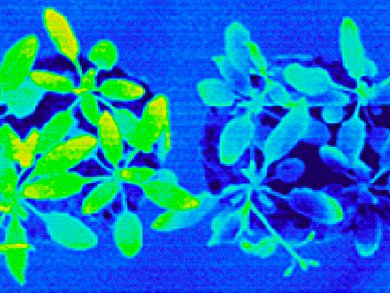Green plants take up CO2 for photosynthesis through tiny pores called stomata on the surface of leaves and other aerial organs. They lose water during this opening through transpiration. During drought, plants protect themselves from excessive water loss by closely regulating stomatal opening and closing. Each stomatal pore is flanked by a pair of kidney-shaped guard cells. When the plant becomes desiccated, the plant hormone abscisic acid (ABA) mediates the drought response by facilitating stomatal closure through its action on the specialized guard cells. Only when sufficient water is available do the guard cells change back to their original shape, opening the pore and allowing transpiration to resume.
Researchers, led by Takashi Kuromori, RIKEN Plant Science Center, Yokohama, Japan, identified a gene that helps plants to conserve water under drought conditions. Working with the plant Arabidopsis thaliana, they previously identified a gene called AtABCG25, which is expressed in vascular tissues and is involved in ABA transport and responses. In their latest work, they identified a related gene called AtABCG22, which is expressed predominantly in guard cells and regulates stomata in Arabidopsis.
Evaporative cooling during transpiration reduces leaf temperature. Thermal imaging methods can therefore be used to monitor transpirational water loss (pictured). Such methods showed that mutant plants lacking functional AtABCG22 protein had lower leaf temperature and increased water loss compared to normal, wild-type plants. The mutant plants were more susceptible to drought stress than were wild-type plants.
Further experiments, in which various mutant plants were crossed, revealed that AtABCG22 interacts genetically with other genes already known to be involved in ABA biosynthesis, transport, or signaling.
The next task will be to identify the exact target molecule or molecules of AtABCG22.
- Arabidopsis mutants of AtABCG22, an ABC transporter gene, increase water transpiration and drought susceptibility,
Takashi Kuromori, Eriko Sugimoto, Kazuo Shinozaki,
Plant J. 2011.
DOI: 10.1111/j.1365-313X.2011.04641.x




